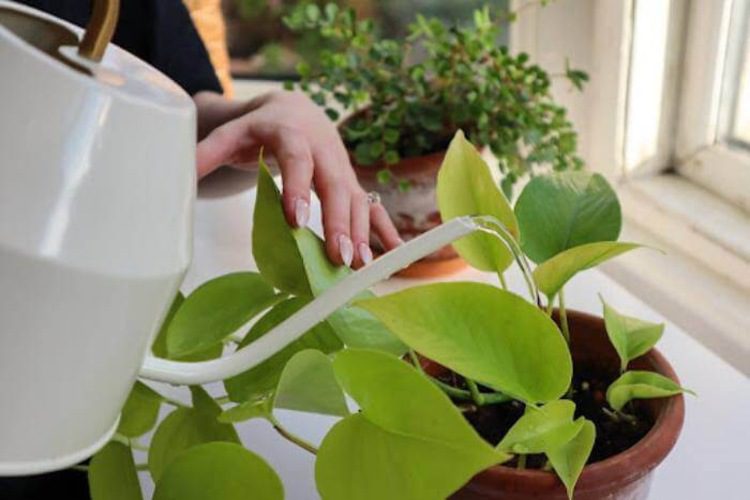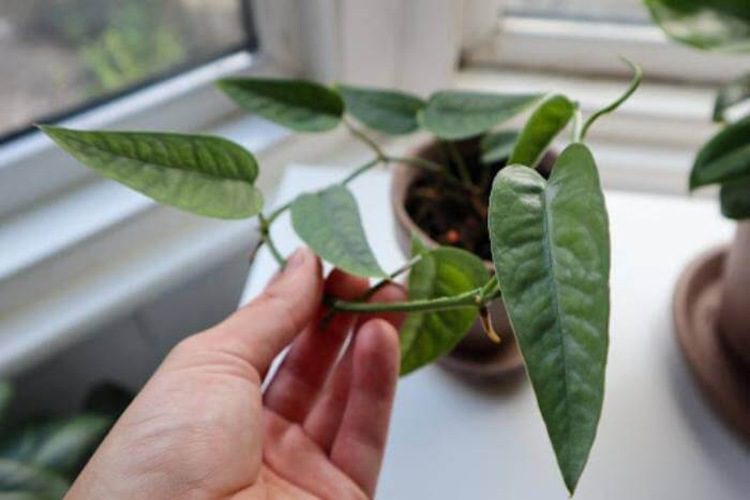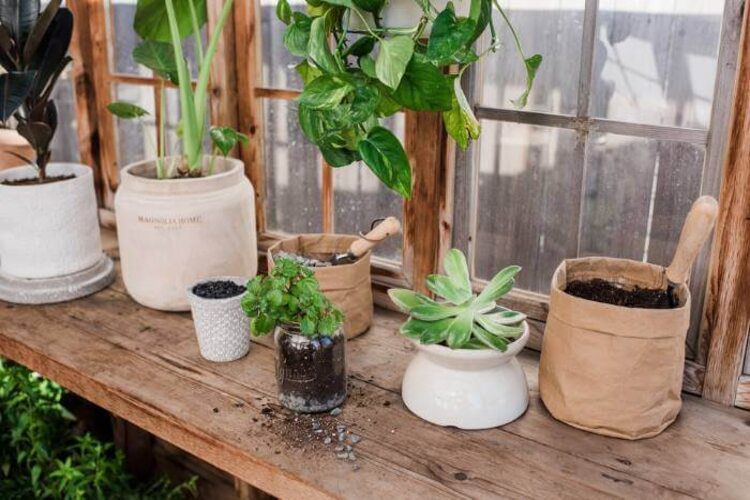How To Propagate Satin Pothos Plant: 2 Useful Methods
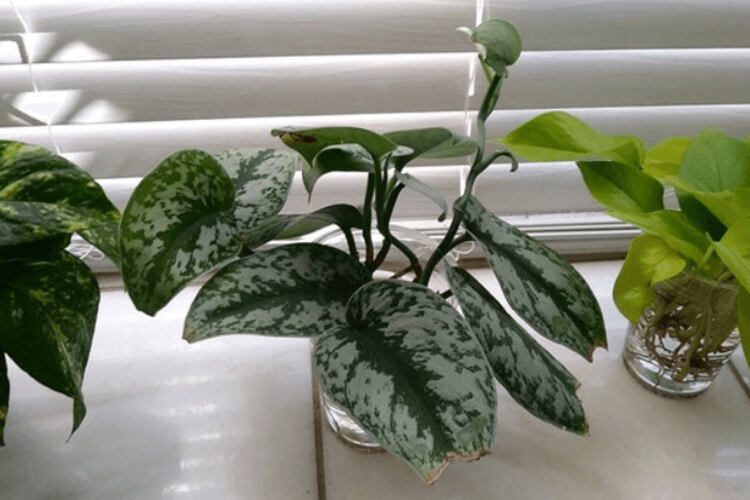
Our recommendation for novice houseplants is a Satin Pothos. They are simple to maintain and spread, too! We recently received cuttings of Satin Pothos in a plant trade, and we are very obsessed with their leaves, which have a dark green color with silver variegation. This plant was given to us as cuttings. Therefore, we had to root them naturally. We can’t wait for them to mature. Here is a guide to Satin Pothos propagation!
When Is The Best Time To Propagate Pothos?
For the greatest possibility of success, propagation should be done at the start of spring, similar to Silver Ann Pothos. If you practice in the fall or winter, the cuttings will attempt to grow throughout the dormant season, and you won’t see anything because the pace of growth is extremely slow. The several months of sun and warmth that spring brings will promote the growth of new roots and leaves. Additionally, it will enable the mother plants to bounce back more quickly from any shock the propagation brings.

How To Propagate A Satin Pothos Plant
In this part, we’ll show you a step-by-step process to propagate this plant in water and soil.
Satin Pothos Propagation In Water
Trim a vine with a few strong leaves below a node using a pair of new scissors. Take a few cuttings if you can to improve your chances of success. Cutting under a node implies the node may be found on the portion you cut off because the node is the place where leaves and roots emerge from the stem. Your new roots will emerge from the node.
Place the cuttings in a jar with lukewarm water. Place the jar in direct sunlight. Make sure no leaves, but at least 1 node, are beneath the surface. Replace the water every week or two when it starts to look gross. After a few weeks, when the roots are about three inches long, it’s time for you to transplant them into the permanent, more substantial pot with a particular soil compound, marking its main growing path.
After that, water it thoroughly and take care of the plant as usual. The cuttings will not develop as quickly or as significantly if you maintain them in water on a long-term basis.
Satin Pothos Propagation In Soil
To propagate your Satin Pothos in soil, you will need:
- Satin Pothos plant
- Pruning shears
- A pot or planter
- Potting soil
- Trowel or spoon
Cuttings from Satin Pothos do take root in the ground. They thrive in calcined clay or organic soil blended with a medium like peat. Adding vermiculite and perlite to the soil improves drainage and the root’s access to air. When growing cuttings in soil, never overwater them. Instead, follow these steps:
- Cut your Pothos directly beneath the node with plant shears.
- Remove the bottom two leaves of the Pothos.
- Insert the cutting into some sterile, moist potting soil.
- Once the cutting is firmly embedded in the soil, form a “U” shape with a coat hanger or a strong gauge wire.
- Nearly on either side of the pot, insert the hanger.
- Over the hanger, place a transparent plastic bag. The pot and cuttings should be contained in the bag.
- Place the rooting bag and pot in a warm location away from the sun.
- Make sure that you keep the bag tight for at least four or six weeks. This will allow enough time for your plant to root and grow before transferring it to its permanent home.
Choose a stem with one or more attached leaves between two and three inches long. When the stem’s base is submerged in the dirt, it will begin to root. Root growth is sped up by dipping the stem end in the rooting hormone. The vine or stem fragments can also be rooted using this technique. In a single pot, you can plant multiple cuttings.
Avoid the temptation to make the Satin Pothos cut wetter. Like a tiny greenhouse, the root bag traps dampness that the Satin Pothos likes. Your tiny cuttings could develop root rot if you overwater them. Check the bag every other day for condensation.
Can You Propagate Pothos From Cutting?
Pothos plants are very easy to propagate from cuttings. To take a cutting, use a sharp knife or pair of scissors to cut a 4-6 inch (10–15 cm) piece of stem from the plant. You can take a cutting from the plant at any time of year and root it in water. Once the cutting has rooted, you can plant it in the soil. Make sure to cut just below a leaf node, which is where new leaves and roots will grow. Remove the lower leaves from the cutting so that only 2–3 leaves are left on the top. These leaves will help provide the plant with energy as it grows roots. If the Satin leaves start to curl, it is a sign that the plant is not getting enough water. Place the cutting in a glass of water and set it in bright, indirect light.
To avoid stagnant water, change the pot’s water every few days. Roots will grow from the leaf nodes within 1-2 weeks. When the roots are 2-3 inches (5 -7 cm) long, you can plant the cutting in a pot filled with moist soil compound.
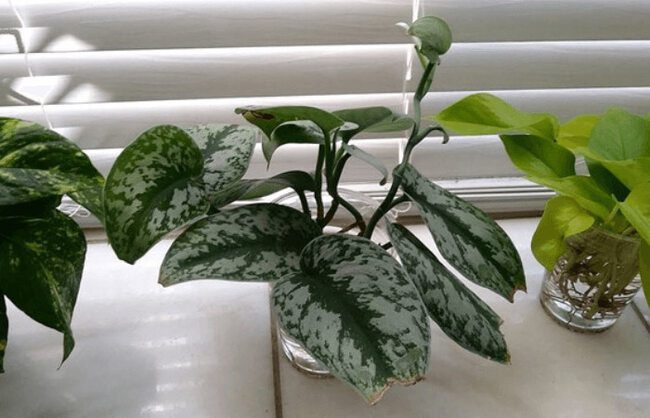
Conclusion
Whether the Satin Pothos propagation is in soil or water, it’s really simple to perform and results with a brand-new plant. When Satin Pothos is this young, we prefer to grow it in water since you can see the roots forming. This is primarily because propagating in the soil is obviously not an option and it is incredibly gratifying to know you are doing things correctly. It’s almost certain that you won’t fail at generating new Satin Pothos if your cutting is trimmed correctly.
Add some nutrient solution to the water and watch for freshness. Like taking care of a Pothos, propagating it is simple and whether you maintain the new growth or give it away to friends, you may be proud of your efforts to spread this lovely plant’s reach!






